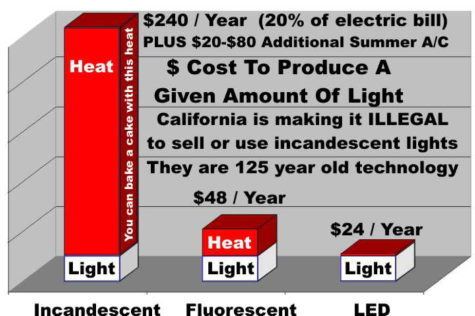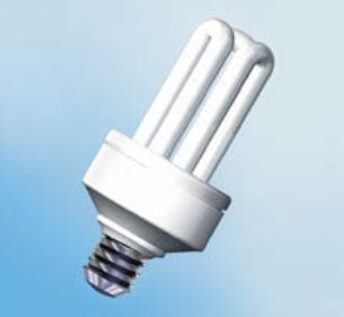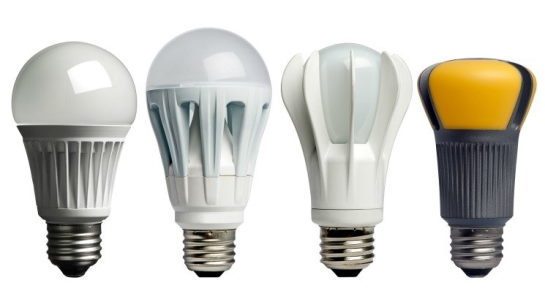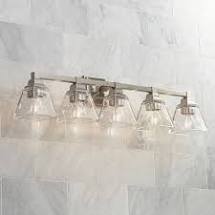The most important thing to take away from this lesson is..
Making improvements to your lighting is one of the fastest ways to cut your energy bills.
Here is a basic investment option that is available to you today. You invest $10 now, and for the next 60 months it will return directly to you $8 per month with almost no risk. Would you do it?
Would you recommend it to your friends and relatives?
The following charts and simple mathematics show how it is done. A number of countries have already made it ILLEGAL NOT to do this.
(America is way behind the world’s leaders). California is now working on the legislation to make it mandatory.


An average household dedicates 11% of its energy budget to lighting. Using new lighting technologies can reduce lighting energy use in your home by 50% to 75%. Advances in lighting controls offer further energy savings by reducing the amount of time lights are on but not being used. Indoor Lighting
Use tube fluorescent and energy efficient compact fluorescent lights (CFLs) in fixtures throughout your home to provide high-quality and high-efficiency lighting. Fluorescent lamps are much more efficient than incandescent (standard) bulbs and last up to 10 times longer. Today’s CFLs offer brightness and color rendition that is comparable to incandescent lights.
Although fluorescent and compact fluorescent lamps cost a bit more than incandescent bulbs, they pay for themselves by saving energy over their lifetime. CFL fixtures are now available that feature dimmers and operate much like incandescent fixtures.

LED has the potential to fundamentally change the future of lighting in the United States.
Residential LEDs -- especially ENERGY STAR rated products -- use at least 75% less energy, and last 25 times longer, than incandescent lighting.The light-emitting diode (LED) is one of today's most energy-efficient and rapidly-developing lighting technologies. Quality LED light bulbs last longer, are more durable, and offer comparable or better light quality than other types of lighting.
How LEDs are Different
LED lighting is very different from other lighting sources such as incandescent bulbs and CFLs. Key differences include the following:
- Light Source: LEDs are the size of a fleck of pepper, and a mix of red, green, and blue LEDs is typically used to make white light.
- Direction: LEDs emit light in a specific direction, reducing the need for reflectors and diffusers that can trap light. This feature makes LEDs more efficient for many uses such as recessed downlights and task lighting. With other types of lighting, the light must be reflected to the desired direction and more than half of the light may never leave the fixture.
- Heat: LEDs emit very little heat. In comparison, incandescent bulbs release 90% of their energy as heat and CFLs release about 80% of their energy as heat.
What You Can Do Starting Today
Indoor Lighting Tips
• Look for the ENERGY STAR label when purchasing these products.
• Turn off the lights in any room you’re not using, or consider installing timers, photo cells, or occupancy sensors to reduce the amount of time your lights are on.
• Use task lighting; instead of brightly lighting an entire room, focus the light where you need it. For example, use fluorescent under-cabinet lighting for kitchen sinks and countertops under cabinets.
• Consider three-way lamps; they make it easier to keep lighting levels low when brighter light is not necessary.
• Use 4-foot fluorescent fixtures with reflective backing and electronic ballasts for your workroom, garage, and laundry areas.
• Consider using 4-watt mini fluorescent or electro-luminescent night lights. Both lights are much more efficient than their incandescent counterparts. The luminescent lights are cool to the touch.
• Use LED's in all the portable table and floor lamps in your home. Consider carefully the size and fit of these systems when you select them. Some home fixtures may not accommodate some of the larger LED's.
• Recessed down lights (also called recessed cans) are now available that are rated for contact with insulation (IC rated), are designed specifically for pin-based LED's, and can be used in retrofits or new construction.
• Take advantage of daylight by using light colored, loose-weave curtains on your windows to allow daylight to penetrate the room while preserving privacy. Also, decorate with lighter colors that reflect daylight.
Another thing you can do which makes a big difference is where you find lights grouped together, like above a bathroom mirror or hallway painting. Usually you'll find three or four in a group. Unscrew the lightbulbs and replace the 2 middle ones with LED's. Leave the others empty. It will make a difference. But you won't sacrifice the quality or intensity of the light.

Outdoor Lighting
Many homeowners use outdoor lighting for decoration and security. When shopping for outdoor lights, you will find a variety of products, from low-voltage pathway lighting to motion-detector floodlights. Some stores also carry lights powered by small photovoltaic (PV) modules that convert sunlight directly into electricity; consider PV-powered lights for areas that are not close to an existing power supply line.
Outdoor Lighting Tips
- Use outdoor lights with a photocell unit or a motion sensor so they will turn on only at night or when someone is present. A combined photocell and motion sensor will increase your energy savings even more.
- Turn off decorative outdoor natural gas lamps; just eight such lamps burning year-round use as much natural gas as it takes to heat a average-size home during an entire winter.
- Exterior lighting is one of the best places to use LED's because of their long life. If you live in a cold climate, be sure to buy a lamp with a cold weather ballast since standard LED's may not work well below 40ºF.
- Also consider high-intensity discharge (also called HID) or low-pressure sodium lights.
Automatic Lighting controls
Use lighting controls to automatically turn lights on and off as needed, and save energy. Of course you can save energy by turning off lights when they're not needed, but sometimes we forget or don't notice that we've left them on.
The most common types of lighting controls include:
- Dimmers
- Motion, occupancy, and photosensors
- Timers.
Motion Sensor Controls
Motion sensors automatically turn outdoor lights on when they detect motion and turn them off a short while later. They are very useful for outdoor security and utility lighting.
Because utility lights and some security lights are needed only when it is dark and people are present, the best way to control might be a combination of a motion sensor and photosensor.
Incandescent flood lights with a photosensor and motion sensor may actually use less energy than pole-mounted high-intensity discharge (HID) security lights controlled by a photosensor. Even though HID lights are more efficient than incandescents, they are turned on for a much longer period of time than incandescents using these dual controls.
HID lightbulbs don't work well with just a motion sensor, as they can take up to ten minutes to produce light.
Dimmer Controls
Dimmer controls provide variable indoor lighting. When you dim light bulbs, it reduces their wattage and output, which helps save energy.
Dimmers are inexpensive and provide some energy savings when lights are used at a reduced level. They also increase the service life of light bulbs significantly. However, dimming reduces an incandescent bulb's lumen output more than its wattage. This makes the bulbs less efficient as they are dimmed.
Dimmers and CFLs
Unlike incandescents, compact fluorescent lamps (CFLs) do not lose their efficiency with dimming. Some CFLs are compatible with standard dimmers, which will be indicated on the package. Others require special dimming ballasts and bulb holders. Fluorescent dimmers are dedicated fixtures and bulbs that provide even greater energy savings than a regular fluorescent bulb. Dimming a CFL that is not designed to work with a dimmer switch is not recommended, as this can shorten its life significantly.
You can change the lightbulbs and ballasts in fluorescent lighting fixtures rather than replace them.
Dimmers and LEDs
Some light-emitting diode (LED) lightbulbs can be used with dimmers. LED bulbs and fixtures must be designed for dimming, and you may need to replace existing dimmer switches with ones that are compatible with an LED lighting product. The packaging or accompanying instructions will indicate if the product is dimmable and which dimmer products are compatible. Fully compatible LED dimmers are expected to become more common as the LED industry expands.
What You Can Do Starting Today
1) Get started immediately replacing your incandescent or “old Style” light bulbs. Walmart, (and many other places now sell “6-packs” of LED's for $10 or less. Invest $20 and replace your bulbs NOW.
2) Look for ways in your house to maximize day time light with windows and skylights.
3.) Consider replacing standard light-switches with motion-detector room lights. This is an easy week-end afternoon job requiring not much more than the switches, and a screw-driver.
Coming Up Next ...
Bonuses!
